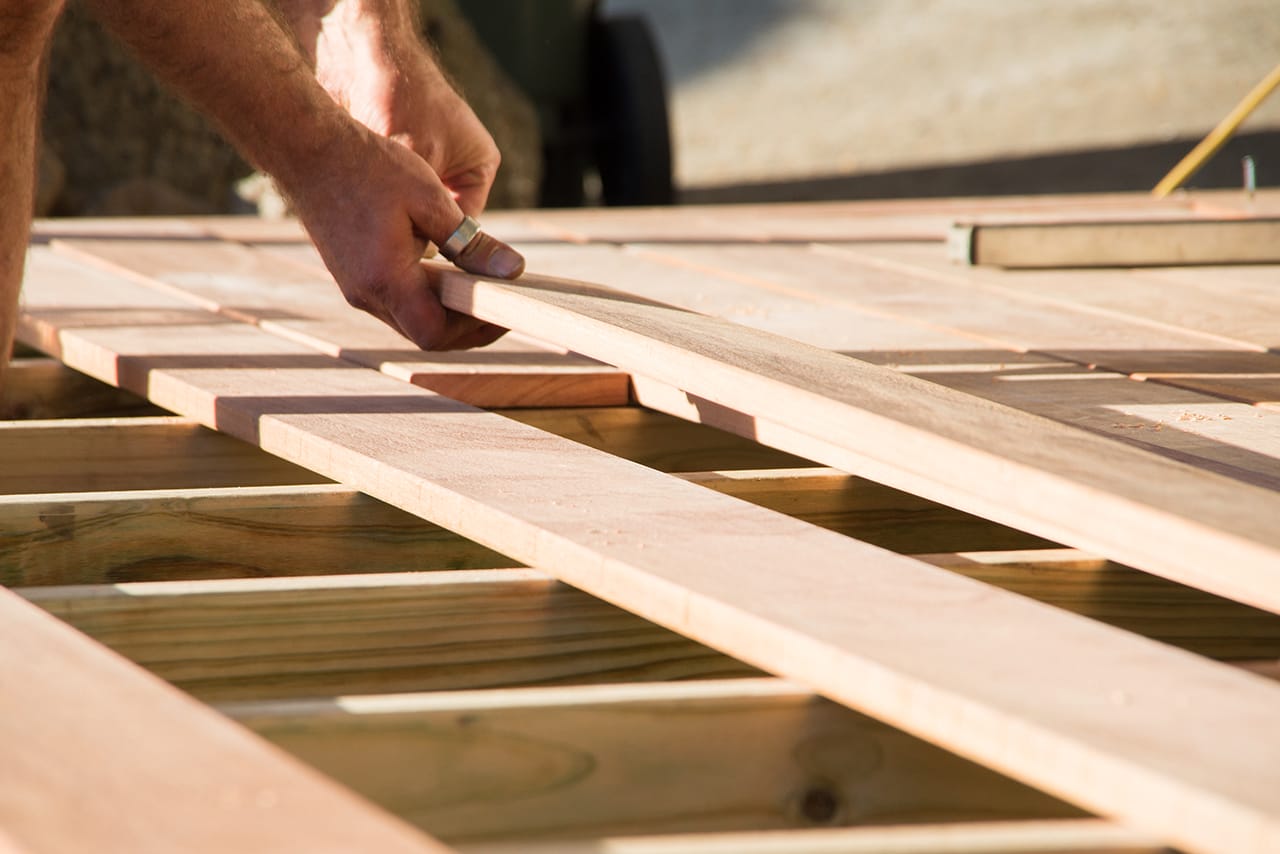Introduction to Deck Maintenance for Longevity
A deck adds value and beauty to your home, but like any part of your house, it needs care to stay in top shape. Let’s get straight to the point: deck maintenance isn’t just about keeping it looking good; it’s about making it last longer. Wood or composite, big or small, every deck needs a bit of T-L-C to fight off the elements—sun, rain, or snow. First, know your deck’s material because wood and composite need different care. For wood, think cleaning, staining, and sealing regularly. For composite, cleaning is your main task, but don’t slack off. That’s your intro to making your deck stand the test of time. Taking care of it isn’t just nice; it’s necessary.

The Importance of Regular Cleaning
Keeping your deck clean is more than just about looks—it’s key to extending its life. Regular cleaning prevents the buildup of mold, mildew, and algae, which can cause wood to rot over time. Imagine inviting friends over and they see a green, slippery deck. Not the best picture, right? So, you might think cleaning your deck is a big chore, but it’s quite straightforward. Sweep it weekly to get rid of leaves and debris that accumulate. This simple act goes a long way in preventing damage. Then, give your deck a thorough wash at least once a year. You can use a deck cleaner suited for your deck’s material—wood, composite, etc. If you spot any mold or mildew, tackle it quickly with a solution made for these pesky growths. Remember, a clean deck not only looks better but avoids costly repairs down the road. Start scrubbing!
Choosing the Right Sealants for Weather Protection
Picking the right sealant for your deck is key to fighting off weather damage. Think rain, sun, and snow — they can all wreak havoc. Go for a water-resistant sealant if you’re mainly worried about rain. It helps prevent rot. But, if your deck gets a lot of sun, look for a sealant with UV protection. This keeps the color from fading. Now, in snowy areas, a sealant that fights against moisture and cold is a must. Remember, some sealants do it all but might cost more. Always check the label for what protection the sealant offers. Choosing smart means less repair down the line.
Repairing Common Deck Problems Early
Catching deck issues early saves you time and money. Think of it like this: a small problem today won’t be a nightmare tomorrow. First off, wood rot is a big enemy. It starts small but can wreck your deck’s structure. Spotting soft spots or discoloration? Act fast. Replace the rotten wood before it spreads. Next up, loose boards and railings. These are often due to nails popping up or screws getting loose. Tighten them up or replace them to prevent falls. Lastly, watch out for peeling paint or stain. It’s not just an eyesore; it leaves your deck open to damage. Sand it down and apply a new coat to keep it protected. Tackling these tasks keeps your deck safe and extends its life. Simple, right?
The Role of Staining in Deck Maintenance
Staining your deck is more than just a way to switch up its color. It plays a crucial role in guarding your deck against the harsh elements. Sunlight and rain can wear down your deck over time, but a good stain can act like a shield, keeping moisture out and preventing sun damage. Typically, you should consider re-staining your deck every two to three years to keep it looking great and to extend its life. Remember, the choice of stain matters too. Some stains penetrate deep into the wood, offering better protection, while others might just coat the surface. A pro tip? Choose a semi-transparent stain if you want to show off the natural beauty of your wood while still providing it with solid protection. So, don’t skim on staining. It’s a small investment that pays off by keeping your deck strong and good-looking for years to come.
Seasonal Maintenance Tips
Stay on top of your deck maintenance to keep it in good shape year-round. Each season requires specific care to combat weather-related damage. In spring, start with a thorough cleaning to remove mold, mildew, and accumulated debris. Check and fix any loose boards or protruding nails that pose safety hazards. Summer demands regular inspections for rot or pest damage, especially in humid climates. Keep your deck sealed and protected against the intense sun and rain. Come fall, clear those fallen leaves and debris to prevent moisture retention which can lead to wood rot. Before winter hits, applying a water-repellent finish will defend your deck from snow and ice damage. While maintenance can seem daunting, a consistent routine across the seasons will prolong your deck’s life and beauty.
Preventing Moisture Damage and Rot
Your deck is like a trusty sidekick to your home, facing all sorts of weather. To keep it strong, you’ve got to tackle moisture, the archenemy of any wooden deck. Moisture can lead to rot, which is as bad as it sounds. First step, make sure your deck has a good finish. A sealant or a stain with a waterproofing agent will do the trick. Reapply it every couple of years, and you’re setting up a solid defense. Keep an eye out for pooling water. If you spot any, it’s time to re-slope or add drainage. Don’t let leaves or debris hang around; they trap moisture against the wood. Sweep them off regularly. Check between the boards, too. Space them out right during installation to allow water to escape, not hang out. Remember, it’s you versus moisture. Stay vigilant, and your deck will stand strong for years.
How to Check for and Address Pest Issues
To keep your deck in top shape, it’s crucial to spot and deal with pests fast. Bugs and critters, like termites or carpenter ants, love making their homes in wood decks. If you’re not careful, they can cause serious damage. Here’s a simple way to check for pests: Look for small holes or sawdust piles, these are telltale signs. Also, if parts of your deck sound hollow when tapped, that’s a bad sign. Now, if you find pests, don’t panic. There are ways to handle it. First, remove any infested wood to stop them from spreading. Then, consider using pesticides designed for the specific pest you’re dealing with. However, make sure the product is safe for outdoor use and won’t harm your deck’s wood. In some cases, it might be best to call in a pro. They can tackle the problem effectively and prevent future infestations. Remember, regular checks and quick action are your best defenses against deck-damaging pests.
Professional Maintenance vs. DIY: What You Need to Know
When it comes to keeping your deck in top shape, you’ve got two paths: hiring pros or doing it yourself. Each has perks, but it’s all about what fits your needs and budget. Let’s break it down. Hiring professionals means they take care of everything. They check for damage, make repairs, apply the right treatments, and they know exactly what your deck needs to fight off rot, mold, and the sun’s harsh rays. Costs vary but think about it as investing in expertise and saving your own time. On the flip side, DIY means you’re in control. It’s less expensive upfront since you’re only paying for materials. However, it requires your time and effort to research the best products and methods. Plus, if you mess up, it might cost you more in the long run. The choice between professional service and DIY comes down to how much you value your time versus your money and how confident you are in your handy skills. Just remember, a well-maintained deck can last years longer, so weigh your options carefully.
Summary: Keeping Your Deck in Top Condition Year-Round
Keeping your deck in prime condition isn’t just about making it look good for the summer BBQs; it’s about preventing damage that can cut short its life. You don’t need to be a pro, just consistent in your care routine. First off, clean your deck at least once a year. This means sweeping off debris and giving it a good wash to prevent mold and mildew from taking hold. If you see any mildew spots, scrub them off with a mixture of water and mild detergent. Checking for and fixing any loose boards, nails, or screws is also crucial to avoid accidents and further damage. Don’t skip on sealing your deck too, right after you clean it. This protects it from water damage that can lead to wood rot. Remember, the sun can be just as harmful. Consider a UV-resistant sealant to keep the wood from fading and drying out. Last but not least, look out for signs of wear and tear, especially before and after harsh weather seasons. Quick fixes to small problems can save you from big repairs down the line. Stick to this plan, and you’ll keep your deck strong and good-looking for years to come.




